We were lucky to catch up with Mary Sullivan recently and have shared our conversation below.
Mary, looking forward to hearing all of your stories today. How did you come up with the idea for your business?
I grew up in Nashville, Tennessee and was one of those children who always seemed to be making something. After completing my BA in Fine Art from Maryville College I worked as a designer and printer at the legendary Hatch Show Print, one of the country’s oldest continually operating letterpress poster shops in Nashville, TN. Through the course of five years I labored at the presses using the historic wood type archive, absorbing the history, materials, and tools of the trade alongside my fellow hired ink-slingers and interns, one of whom introduced me to the art of bookbinding.
This, combined with my experience as a job printer, custom designer, printmaker, and retail experience led me to apply to the University of Iowa’s Center for Book Arts MFA program to immerse myself in book history, fine printing, historic bookbinding, and skill development that would nurture aspirations of a life as a self employed artist.
When I was learning to bind books, I was drawn to the styles of binding that were designed for people to write in. These bindings had already been tested by time, many of them lasting for centuries. The stark contrast between these centuries old books and the sorry state of the machine-made, mass produced journals of my youth made me realize that books didn’t have to be ephemeral, that they could stand up to daily use, sometimes lasting for centuries. If made well with quality materials and skillful training, these vessels of information could be designed to protect the thoughts, hopes, and dreams of those who would choose to live with my books.

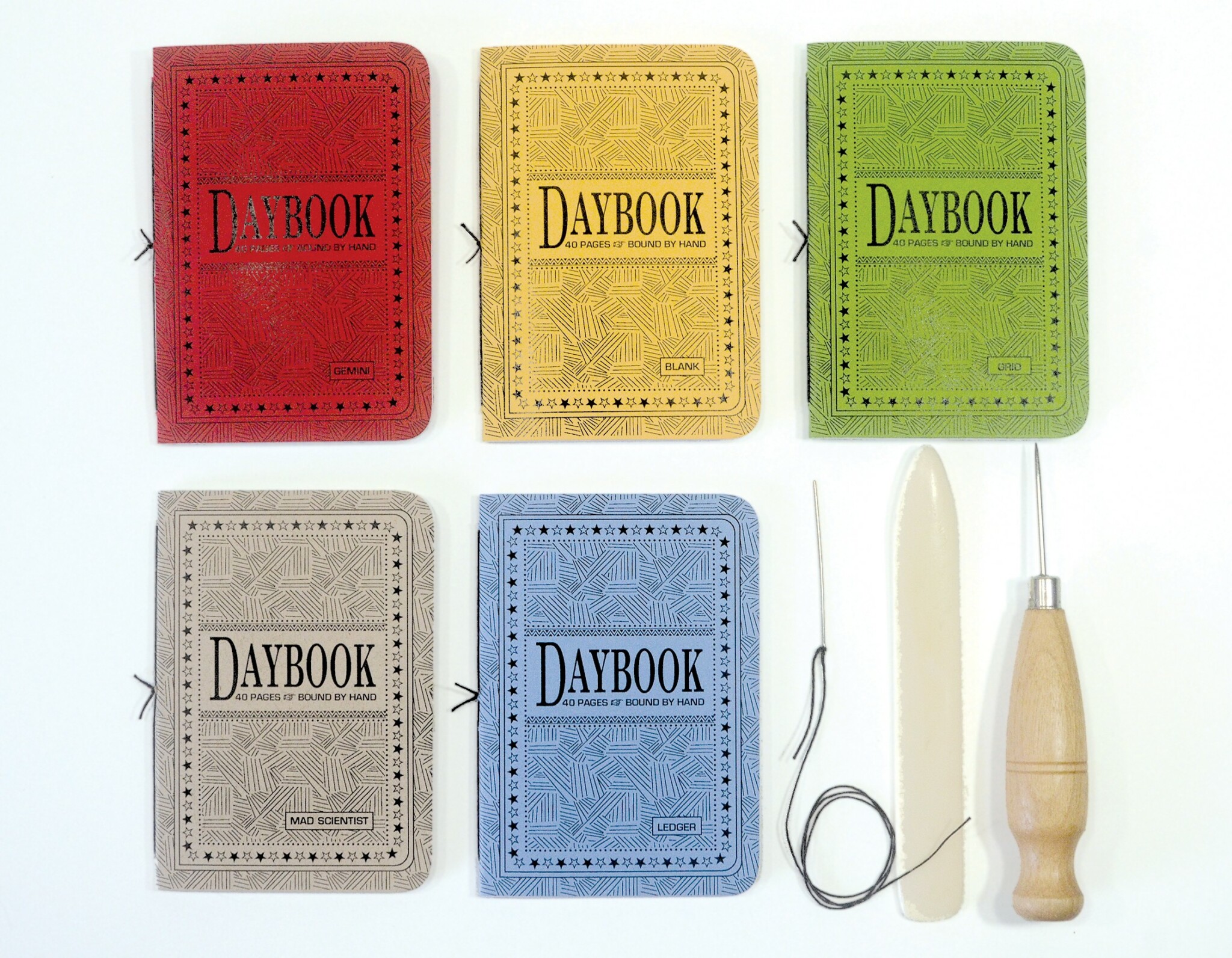
As always, we appreciate you sharing your insights and we’ve got a few more questions for you, but before we get to all of that can you take a minute to introduce yourself and give our readers some of your back background and context?
While I was employed as a designer and printmaker at Hatch Show Print, one of our summer interns, now a successfully established illustrator, introduced me to the concept of making books by hand as she worked on a gift for her father during our lunch break using offcuts from a press run. She was enrolled in a book arts class at her college and explained her process as I watched, mesmerized. The next day she brought in some of her coursework, beautifully illustrated, letterpress printed, and hand bound artist books. She provided me with a list of instructional books and a small list of tools that would be needed, and others I could either purchase or make myself. The bookworm bites hard and it held fast.
This summer also coincided with several of my coworkers opening their own Etsy shops and printing after hours to enrich their creative needs and to sell their own artwork outside of the grind of showprint jobbing. I too opened my first Etsy store and as I slowly learned to make a variety of blank books I too began to sell them online. During those years as a printer and designer, each one of us also took turns running the retail store and occasionally added to the inventory. I got to interface with a historic art-interested public and I also was asked to develop several blank notebook styles for the store using off cuts and misprints for the covers. This was my first official employment as a bookbinder, albeit a humble side note to my dream job as a printmaker.
The combined experience of working in a printshop, selling my own books online, and being able to see people interested in my book work in the retail store lit within me an entrepreneurial spark. The lure of designing, manufacturing, and selling my own work nurtured dreams of creative autonomy and self employment as an artist. This eventually led me to seek out workshops and graduate programs where I could continue to feed my book obsession, build skills, and plan for an art business of my own. I later enrolled in the University of Iowa’s Center for the Book MFA program and focused my studies on everything I could learn that could enhance my aspirations as a professional artist.
Over the next 3 years I studied bookbinding, papermaking, printmaking, calligraphy, and book repair and was taught by some of the most respected practitioners in my field. Upon completing my MFA in Book Arts I moved back to my hometown in Nashville and founded Crowing Hens Bindery, where I design, make, and sell everything from blank books to letterpress printed stationery, decorative papers, art prints, and miniature book jewelry; all made by hand, one at a time. My goal was and is to make well constructed, thoughtfully designed books that are both handsome and dependable. I make books that are honest, books that serve the user, and books that will last for generations.
Humans and books have a shared history that spans several millennia, and written language is even older still. Our ancestors invented the codex in the second century to protect and make portable humanity’s most important information. The continuing desire and impulse to record, store, and refer to information on the physical page is a primal response, one that forever highlights the value of the book as part of our cultural DNA. Perhaps the most practical and personal relationships we have with books on a daily basis is in journaling.
Keeping a journal is a practice that can be both introspective and therapeutic. In many ways a journal is a personal sanctuary. What initially drew me to bookbinding was the process, the history, and the materials that we as bookbinders use. I am driven to make blank books, specifically journals, because I know from first hand how important a journal can become as a personal artifact. The most intimate relationships we can have with books are a result of how much of ourselves we put into them, how much we rely on their sanctuary. Most of the journals I kept as a child were quick to fall apart, the metal coils would tangle and bend loosing pages, and part of me would be lost. Not all books are designed for writing, and not all books are designed to last.
My fascination with stationery binding stems from the symbiotic relationship between the needs of the writer and the design and function of a blank book. Understanding how a book will ultimately be used can help to inform the structural and design elements of a binding. A blank book that is tailored to the specific needs of a writer can, in turn, enhance the writing experience and spur creativity and expression. The truth is, my love of bookbinding is only in part due to my fascination with how books are made. It’s ultimately how my books are used and who uses them that drives my book obsession. It’s the curious romance we have all cultivated for this living, breathing artifact that has helped shape who we are and how we communicate with each other and ourselves.
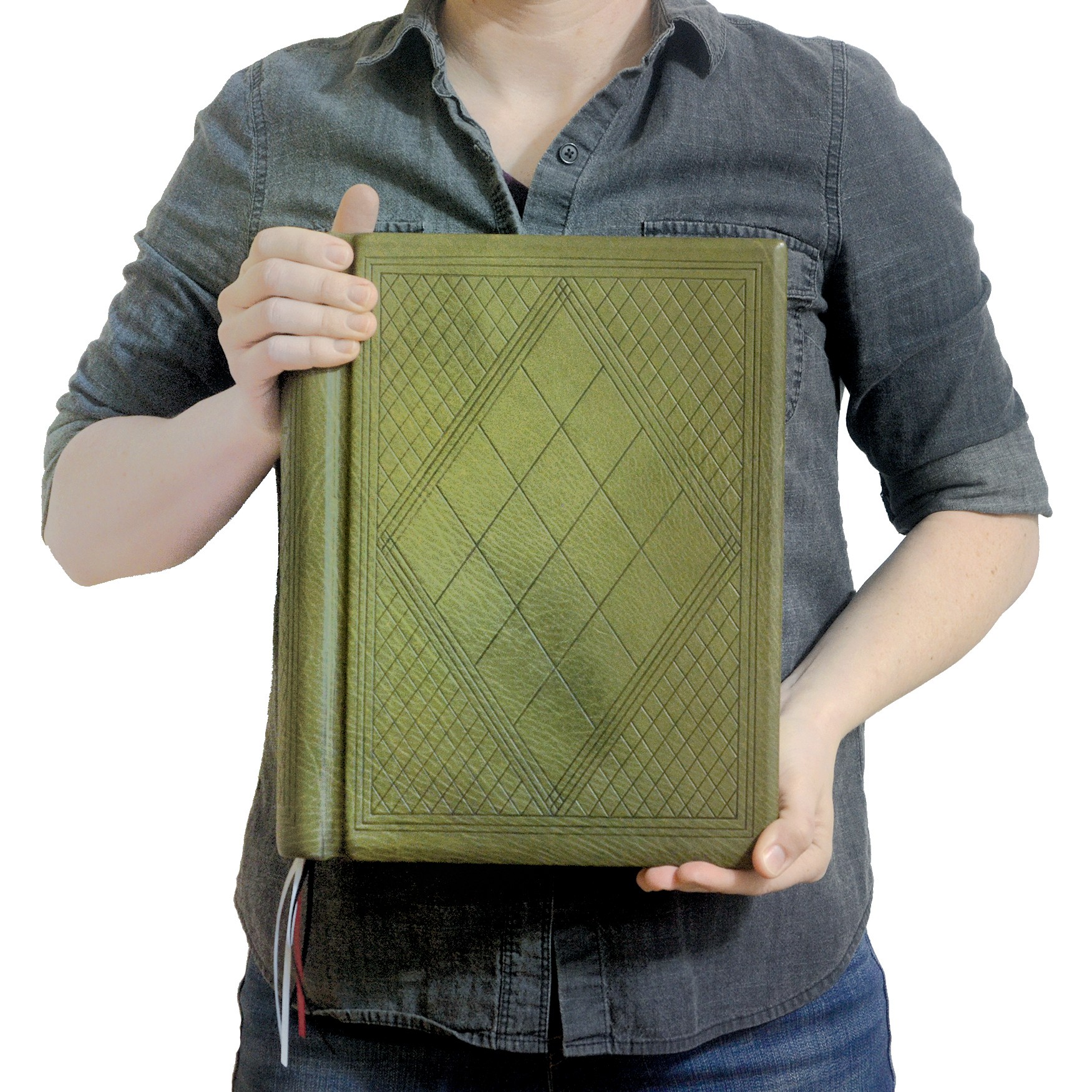
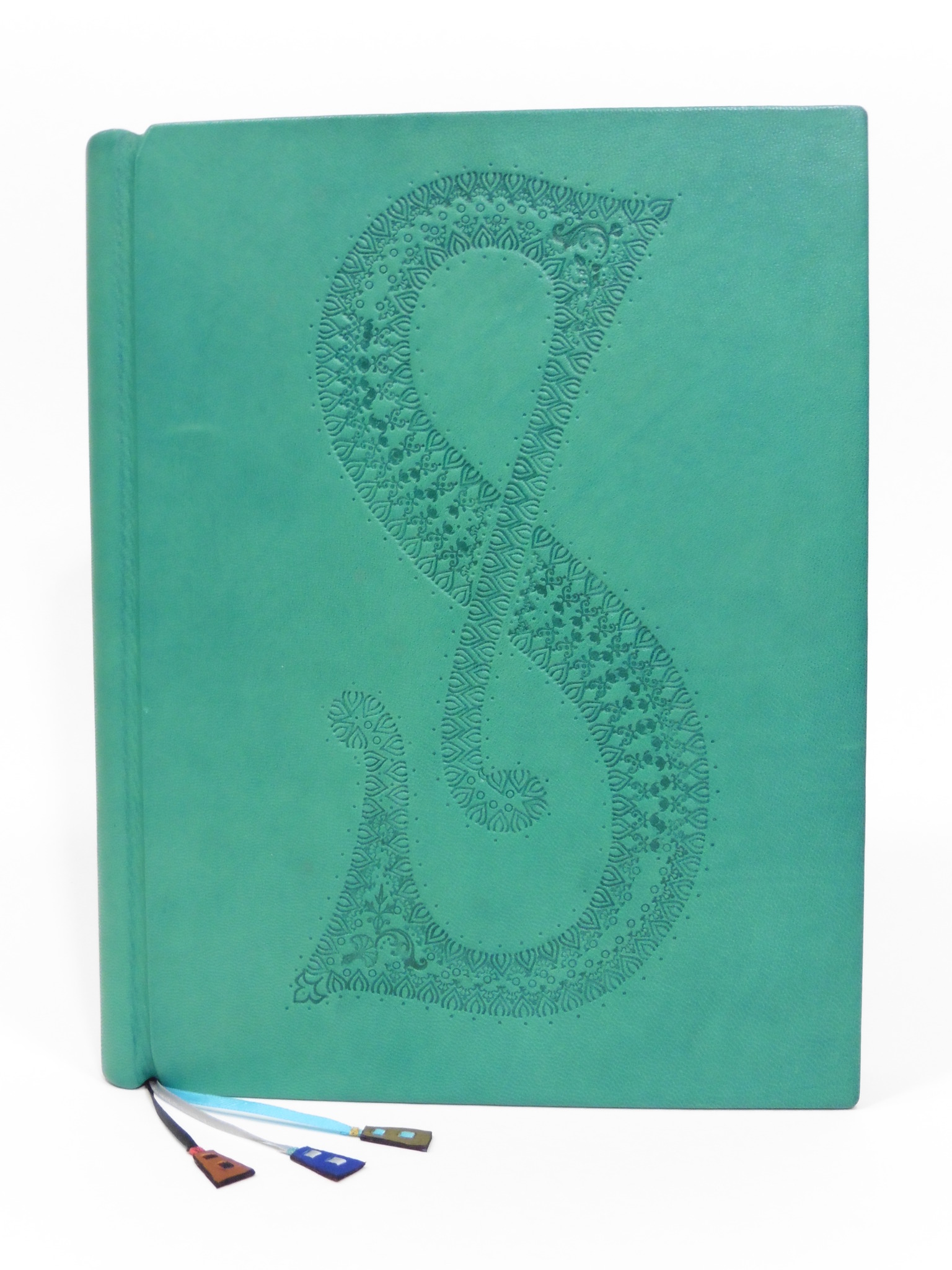
Okay – so how did you figure out the manufacturing part? Did you have prior experience?
My art business has always been a mixture of history, romance, precision, and process.
In my early days of learning how to make books and even back in my tenure as a letterpress printmaker and designer, I learned that the quality of a finished product isn’t always tied to the newest technology, or the heaviest for that matter.
Things like treadles or heavy motorized equipment don’t make the job of cutting paper or printing an effortless process. They can make it a little easier, but what these conveniences really offer is efficiency. These conveniences and efficiencies come with something that seasoned printers and bookbinders know all too well, an exponentially greater likelihood of accidents and injury. Ask any job printer in their 70’s or 80’s to show their hands and you’ll likely see a mangled finger, a missing digit, and probably a colorful anecdote to go along with it.
The point is that no matter the equipment that a printer or bookbinder is blessed with, every stage of the process takes significant effort, attention, skill, and patience. There is no easy way out with this kind of work.
I say this because it is important to me for people to know why I do what I do and my approach to my craft. I love the process. Every part. I do it because I respect the work that it takes to do it well and the equipment I depend on enough not to cut corners.
I don’t say these things to criticize consumers on their biases regarding the prices of goods and services. What I do realize as a small business owner and someone who makes all of my goods by hand is that there is a colossal disconnect between the things that people buy and the curiosity or knowledge of where their possessions actually come from. This is where education and appreciation plays a major role.
Part of my business as a bookbinder, printmaker, papermaker, and jeweler is in the making of tangible goods. Another part of my job as an entrepreneur is a responsibility that I feel to educate my customers about how things are made, where they’re made, and who makes them. That is my ultimate goal. I want to build an educated and appreciative clientele that recognizes the effort that goes into producing the items that I make and acknowledges that the pricing of that item reflects the effort it took by one woman in Nashville, TN to bring that object into being from conception to the shelf.


How did you build your audience on social media?
My initial foray into the social media circus of self-promotion began before I finished my Masters program. I already had the name of my business, Crowing Hens Bindery, and reserved my handles and website. Having no formal training in marketing and a novice approach to online communication, I began my online presence from scratch by introducing my business, my background and providing insights not only into the process of how my work comes into being but also by sharing the ins and outs of an art business and the importance of maintaining a humble humanity as an artisan.
In the early days of my business’s social media presence I documented various stages of the design and manufacturing of my work in my studio. I’d show the evolution of my studio itself as it grew to support more supplies, tools, and inventory. I shared my own musings on my work and that of my fellow artisans. I wrote a blog and posted and cross-posted content on a variety of social media platforms. While the experience of regular posting and promotion was generally successful in growing an audience, what I discovered was more successful than promoting individual products was in showing the process and the person behind them.
One thing I take for granted, being the kind of person who’s always worked with my hands, is that not everyone has that kind of exposure. When I was growing my online presence I was careful to avoid any notions of influencer status or gimmick to sell my work. What I focused on instead was an honest approach to the realities of running a one-person art business; the ups and downs, successes, failures, learning experiences, the humanity of the maker and the passion for skillfully crafted goods in a world consumed by fast fashion and ephemeral consumerism.
Being the maker of my goods, my approach wouldn’t be a universally successful approach for everyone building an online presence. What it may provide, however, is a perspective that values transparency. Yes, I’m obviously trying to sell my work. While I view journals and stationery as a valuable tool for self reflection and communication, they’re not considered necessary commodities. I also acknowledge that the price point for my goods is not in everyone’s budget, nor can it compete with goods in a big box store or elsewhere online. Because I’m not a machine.
What I can do is humanize my business and my work so that people can make a connection to me, my passion for this outdated, antiquated process and build appreciation for it. I can educate people about how I go about designing and making my books and prints, I can virtually invite them on a tour of my studio and introduce them to my cats. Ultimately there is a hope for currency to change hands and for my work to find a new home. What I hope for in my social media presence, is an enriching dialogue between the person who makes the goods and the person who uses them.
Contact Info:
- Website: https://crowinghensbindery.com
- Instagram: @crowinghensbindery
- Facebook: @crowinghensbindery
- Twitter: @crowinghensbind
- Youtube: https://www.youtube.com/@crowinghensbindery7012
- Other: TikTok: @crowinghensbindery
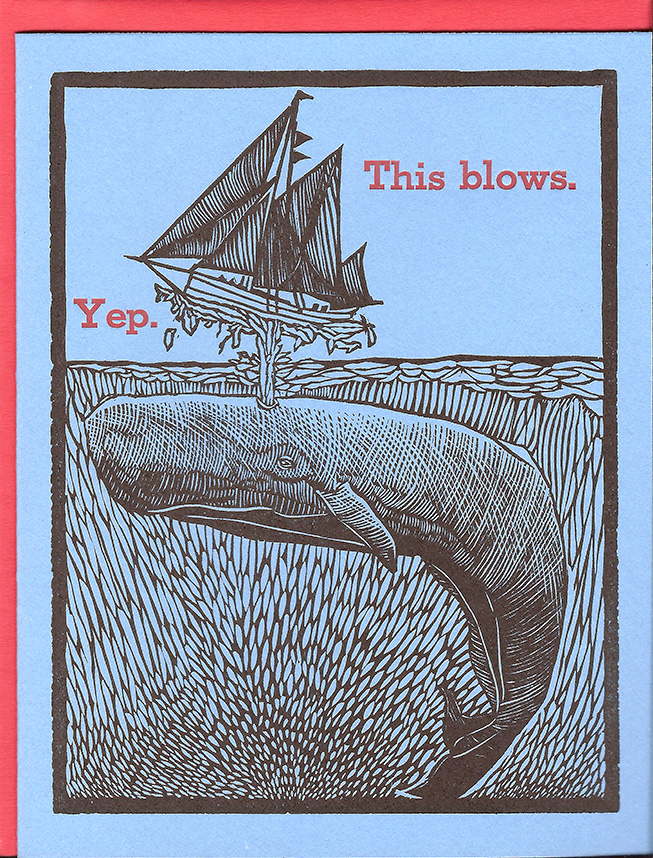
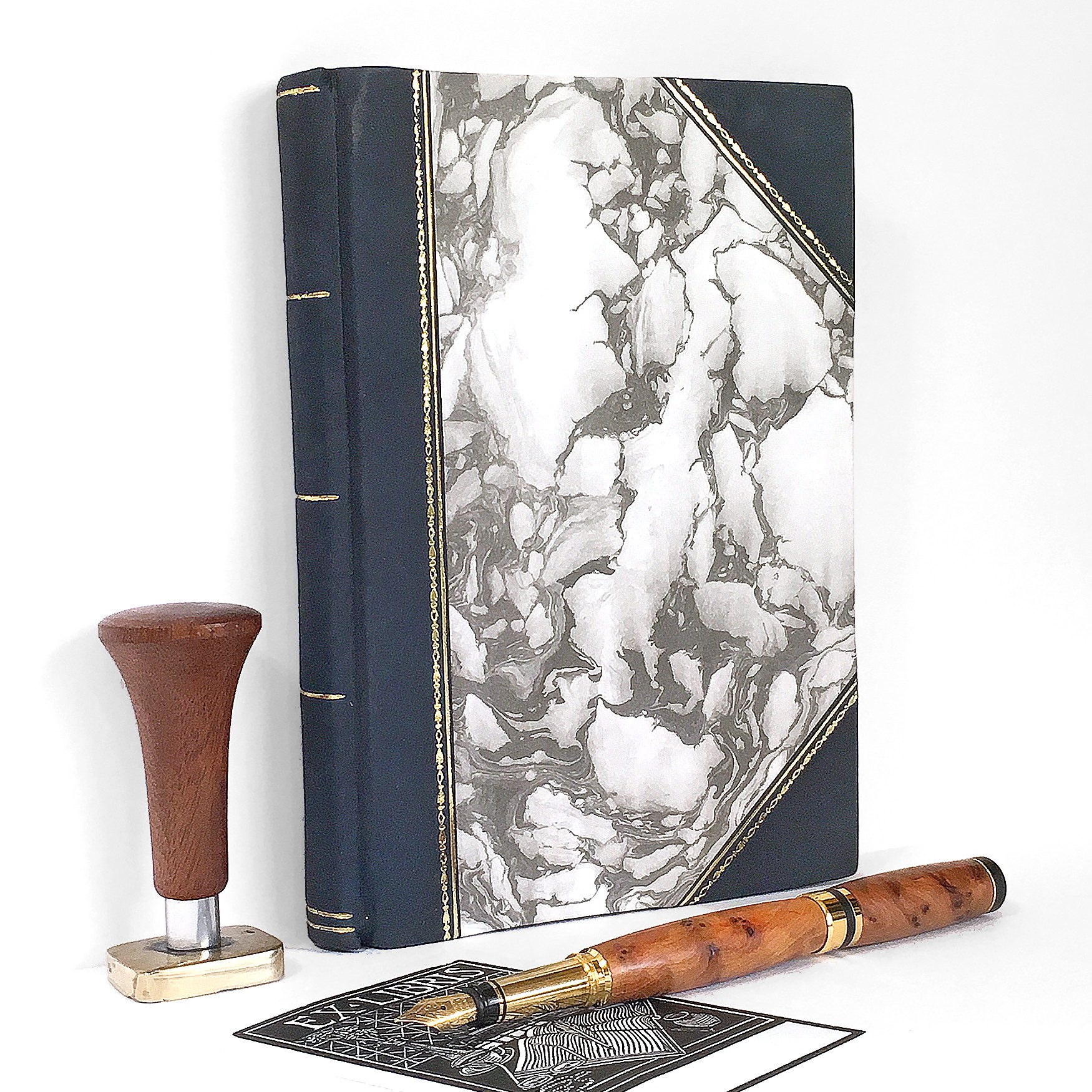
Image Credits
All images are my own, credit Mary Louise Sullivan.


